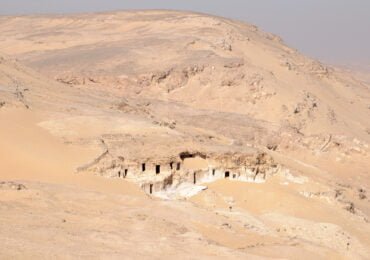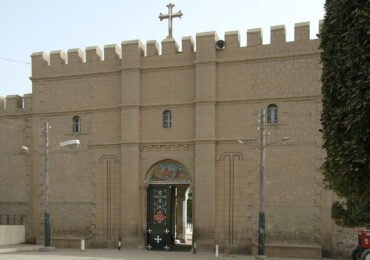Assyut, with its rich history, vibrant culture, and picturesque landscapes, offers visitors a variety of activities to enjoy. Here are some things to do in Assyut:
Explore Ancient Sites:
Immerse yourself in Assyut’s ancient history by exploring archaeological sites such as the Tombs of Meir. Marvel at the intricate hieroglyphs, and well-preserved artifacts that provide insights into Egypt’s ancient civilization.
Tombs of Meir:
One of the best things to do in Assyut is exploring the great tombs of Meir. The Tombs of Meir, located 60 km north of Assyut. They are a fascinating archaeological site that offers insight into ancient Egyptian funerary practices and beliefs.

The Tombs of Meir are situated on the west bank of the Nile River. Approximately 7 kilometers south of El-Qusiah. Dating back to the Middle Kingdom period (circa 2055–1650 BCE). These rock-cut tombs were burial sites for important people in society, like local officials, priests, and nobles.
Meir tombs are carved into the limestone cliffs of the desert plateau. Featuring elaborate facades adorned with decorative motifs and inscriptions. Each tomb consists of a series of chambers and passages. Designed to accommodate the deceased and their funerary offerings. The walls of the tombs are adorned with vivid reliefs. Depicting scenes from daily life, religious rituals, and the journey to the afterlife.
Tombs of Meir are renowned for their exquisite artwork and craftsmanship. Which provide valuable insights into ancient Egyptian art, religion, and society. The reliefs found within the tombs depict a wide range of subjects. Including scenes of agriculture, hunting, fishing, feasting, and religious ceremonies. Offering a glimpse into the daily lives and beliefs of the ancient Egyptians.
Visit Religious Landmarks:
One of things to do in Assyut is to visit the religious landmarks of the city. Pay a visit to the Great Mosque of Assyut (Al Azhar Mosque). One of the city’s most important religious landmarks. Admire its stunning architecture, peaceful courtyards, and ornate decorations. Learn about its significance as a center of Islamic worship and scholarship.
Al-Muharaq Monastery:
The Al-Muharaq Monastery, or the Monastery of the Holy Virgin Mary, is a historic Coptic Christian site. It is located in the desert near the city of Assyut in Upper Egypt.

The Al-Muharaq Monastery is situated in the western desert of Egypt. Approximately 52 kilometers north of the city of Assyut. Nestled amidst the rugged terrain of the Western Desert, the monastery is surrounded by barren hills and rocky outcrops. Providing a secluded and tranquil setting conducive to prayer, meditation, and contemplation.
History of the Al-Muharaq Monastery dates back to the early Christian period in Egypt. Its origins believed to trace back to the 4th century AD. According to tradition, the monastery was founded by Saint Menas. A revered Coptic Christian saint, who sought refuge in the desert to escape persecution by Roman authorities. Over the centuries, the monastery grew in size and importance. Becoming a center of Coptic Christian worship, pilgrimage, and monastic life.
The architecture of the Al-Muharaq Monastery reflects its long history and religious significance. The monastery has several buildings. These include a church for the Holy Virgin Mary, chapels, monk cells, a dining hall, and offices. The main church has traditional Coptic architecture. It features domes, arches, and detailed decorations. The walls are covered with colorful murals, icons, and religious symbols.
Discover Cultural Heritage
With things to do in Assyut, delve into Assyut’s cultural heritage by visiting museums and cultural centers that showcase the city’s art, history, and traditions. Explore exhibits highlighting ancient artifacts, Coptic Christian heritage, and local handicrafts. Gain a deeper appreciation for Assyut’s rich cultural tapestry.
Durunkah Monastery:
The Durunkah Monastery, also known as the Monastery of the Virgin Mary and Saint Abba Pijimi. It is a historic Coptic Christian monastery located in the desert near the city of Assyut in Upper Egypt. The Durunkah Monastery is located in the western desert of Egypt. It is about 10 kilometers south of Assyut.
The history of the Durunkah Monastery dates back to the early Christian period in Egypt. Its origins believed to trace back to the 5th century AD. According to tradition, the monastery was founded by Saint Pijimi. A revered Coptic Christian monk, who sought solitude and spiritual enlightenment in the desert. Over the years, the monastery grew larger and more important. It became a center for Coptic Christian worship, pilgrimage, and monastic life.
The architecture of the Durunkah Monastery reflects its long history and religious significance. The monastery complex consists of several buildings, including a church dedicated to the Virgin Mary and Saint Abba Pijimi, chapels, cells for monks, a refectory, and administrative facilities. The main church has traditional Coptic architecture. It features domes, arches, and detailed decorations. The walls are covered with colorful murals, icons, and religious symbols.
Rifa Tombs:
Rifa, or Rifah, is a village near Assyut. It is known for its ancient tombs and archaeological sites. Rifa is located on the west bank of the Nile River. It is about 13 kilometers south of Assyut. The area is famous for its rock-cut tombs from ancient Egyptian times. These tombs are very important for archaeologists, historians, and fans of ancient history.
The Rifa Tombs were likely used as a burial site for important people in ancient Egypt. This included nobles, officials, and priests during the pharaonic period. These rock-cut tombs were final resting places for the dead. They had elaborate chambers, sarcophagi, and burial goods. These items were meant to help them in the afterlife.
Rifa Tombs exhibit distinctive architectural features characteristic of ancient Egyptian burial practices. The tombs are carved into the limestone cliffs of the desert plateau. They have detailed reliefs, hieroglyphic writings, and images of religious rituals. These features give us a glimpse into ancient Egyptian beliefs about death, the afterlife, and the soul’s journey.
Enjoy Nature:
Another type of things to do in Assyut is to enjoy Assyut’s nature. Take in the natural beauty of Assyut by exploring its scenic landscapes and outdoor attractions. Take a nice walk by the Nile River. Relax in green parks and gardens. You can also go hiking in the nearby mountains and deserts.
Banana Island:
Banana Island is a lovely oasis near the city of Assyut. It sits in the middle of the Nile River. The island has green plants, rich soil, and tall banana trees. This creates a beautiful and peaceful place by the calm river.
Banana Island is renowned for its thriving agriculture, particularly its banana plantations from which it derives its name. The island has rich soil and plenty of water from the Nile River. This makes it a great place to grow many crops, like bananas, citrus fruits, vegetables, and sugar cane. Visitors to Banana Island can explore the lush plantations, observe traditional farming techniques, and sample fresh produce grown on the island.
Paradise Park:
Paradise Park, located in Assyut, is a delightful recreational destination known for its lush greenery, scenic landscapes, and family-friendly amenities. The park is surrounded by verdant gardens, towering trees, and manicured lawns, creating a tranquil oasis where visitors can escape the hustle and bustle of city life and reconnect with the beauty of the natural world.
Paradise Park features a range of recreational facilities and attractions to suit visitors of all ages. Families can enjoy picnics on the grassy lawns, take leisurely strolls along the winding pathways, or relax in shaded gazebos while admiring the scenic views. Children can frolic in the playground areas, which are equipped with swings, slides, and other fun equipment designed to keep them entertained for hours.
Paradise Park offers dining options and refreshment facilities for visitors to enjoy. Picnic areas equipped with tables and benches provide the perfect setting for alfresco dining, while food kiosks and vendors offer a selection of snacks, beverages, and refreshments to satisfy cravings and keep visitors energized throughout their visit.
Experience Local Cuisine:
Indulge in the flavors of Assyut by sampling its delicious cuisine. Head to local restaurants and eateries to savor authentic Egyptian dishes such as koshari (a hearty mix of rice, lentils, pasta, and chickpeas), ful medames (fava beans stew), and mahshi (stuffed vegetables), accompanied by freshly baked bread and flavorful dips.
Attend Festivals and Events:
Immerse yourself in Assyut’s vibrant cultural scene by attending festivals and events that celebrate the city’s traditions and heritage. From religious celebrations and cultural festivals to music concerts and art exhibitions, there’s always something exciting happening in Assyut.
Shop for Souvenirs:
Browse local markets and souks to shop for unique souvenirs and handicrafts to take home as mementos of your trip. Discover handmade textiles, pottery, jewelry, and other traditional crafts crafted by skilled artisans, and support the local economy while preserving Assyut’s cultural heritage.
Engage in Assyut Outdoor Activities:
Get active and enjoy outdoor activities such as horseback riding, birdwatching, or boat cruises along the Nile River. Whether you’re seeking adventure or relaxation, Assyut offers plenty of opportunities to enjoy the great outdoors and soak up the natural beauty of the region.
With its diverse array of attractions and things to do in Assyut, Assyut promises an unforgettable experience for travelers seeking to explore the rich history, culture, and natural wonders of Egypt’s heartland.

